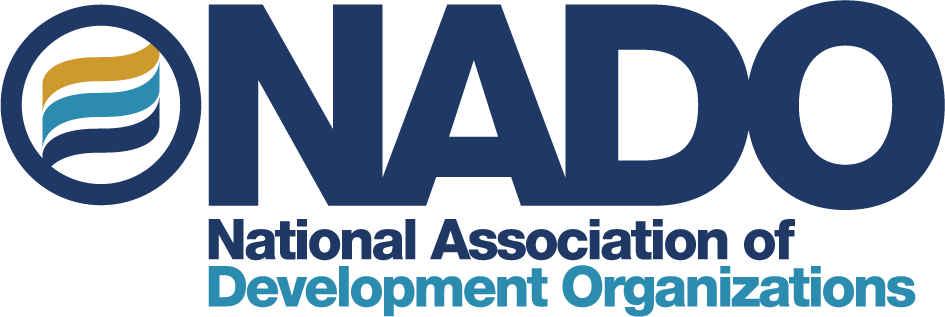Setting the Stage for Redevelopment
Located on Interstate 80 about 75 miles northeast of Reno, Nevada, the small city of Lovelock is home to just under 2,000 residents and as the only incorporated municipality in Pershing County serves as its county seat. The entire city fits into an irregular block less than two miles long and a mile wide and hosts Pershing County schools, a general hospital, a humane society, a marijuana dispensary, a few casinos, a Safeway grocery store, and a number of other assorted small businesses and associations to sustain the town and the surrounding community. Though named after George Lovelock who ran a storefront in the 1800s, it is perhaps best known for leveraging its name into an annual tradition in which couples travel to the community to symbolize the resilience of their relationships by securing a padlock to a fence in the town’s central square. Lovelock’s brownfields journey is itself a case study in resilience – one in which the community has had to creatively adapt to challenges and setbacks as it establishes a vision for a vibrant future.
Pershing County is spread out over 6,000 square miles and is an important agricultural producer for the region, growing alfalfa and other hays for livestock. It is home to the nation’s largest operational silver mine and a large Atlantic salmon farm is scheduled for construction in 2021. Despite the fact that as many as one-third of the properties in Lovelock are vacant or rundown, Pershing County did not have any formal brownfields projects prior to 2017. The Pershing County Economic Development Authority (PCEDA) developed a Strategic and Revitalization Plan that included considerations for the abandoned or underutilized lands as part of a strategy for economic resilience. PCEDA worked closely with the Western Nevada Development District (WNDD), the region’s economic development district that serves seven counties and five cities, to apply for assessment funding from EPA’s Brownfields Program. Heidi Lusby-Angvick, executive director of PCEDA, and Sheryl Gonzales, executive director of WNDD, wrote the application in late 2017 which was approved within a few months. WNDD ultimately received two Brownfields Communitywide Site Assessment Coalition Grants totaling $600,000. The funds were intended to inventory all of Lovelock’s brownfield properties, select the highest priority redevelopment sites, and then assess those properties through Phase I, Phase II, as well as Clean Up and Reuse Planning.
In November 2019, while WNDD and PCEDA were still in the planning stage, an arson fire in downtown Lovelock severely damaged a pub, a bookstore, and a former law office. Four lots in total, each with different owners, were affected. PCEDA reached out to Lisa Hanusiak, EPA’s Region 9 Brownfield Project Manager, to begin prioritizing funds for assessment of the burned properties. There were immediate challenges, including pending insurance documents, an arson investigation, and property owners unconvinced at the time about the brownfields process. Additionally, that spring the COVID-19 pandemic drastically slowed the planning process for the overall brownfields project. PCEDA was finalizing preparations for a public engagement charrette in March 2020 when the governor of Nevada ordered the state to shut down for quarantine. In-person meetings were canceled and the traditional public engagement process was no longer a possibility. However, with technical assistance from WNDD, PCEDA was able to pivot to a virtual public engagement process, despite limited funding, time, and resources.
A DIY Virtual Engagement Process

PCEDA and WNDD designed a multi-staged virtual engagement process that included a homemade 5-minute video tour of the proposed sites for assessment and a simple, but very effective website to receive comments and questions about the brownfields project. The video was recorded by Don Vetter, WNDD’s Economic Recovery Coordinator, and featured Heidi at the five proposed brownfields sites in downtown Lovelock. Says Don, “With the video, we tried to create a ‘docent tour” where there was the YouTube video on one side of the screen and on the other a Cognito Form with questions that were open-ended where people could fill in the blanks.” Heidi recalls that “the video wasn’t very polished or pristine, but people liked that it was real and authentic, that it was part of their community.” The video was posted on the website where the public was asked to respond to four questions: What do you value in the downtown core? What historical elements should be retained? What elements are needed in the downtown core to become a business and visitors’ destination? What are the building blocks for a downtown vision? After a great deal of grassroots advertising through social media, local newspaper ads, phone calls, and emails, the initial Virtual Tour received about double the usual engagement from the Lovelock public, with plenty of comments about residents’ priorities for the redevelopment of the town.
A Vision for the Future
After the arson investigation concluded, negotiations could begin with the owners of the burned properties to collaborate on the brownfields process. Meanwhile, Phase 1 and 2 assessments began on the various prioritized brownfield sites around Lovelock; specifically, there were two properties that were of interest to potential commercial buyers, but only if the buildings were determined to be free of contaminants. Also, because the original grants did not include funding for cleanup, PCEDA applied for another grant from the Nevada Division of Environmental Protection to begin preparing the burned properties for reuse. After reviewing the input from the Virtual Tour, the planning team organized two vision setting workshops in November and December 2020, both via public Zoom meetings. The first Visioning Workshop was meant to synthesize the ideas suggested from the Virtual Tour in order to design a unified vision for the development of the community, including a series of eight broader themes and five “Bold Steps” that could be taken towards realizing the objectives of those themes. The second visioning meeting built on the first, wherein the facilitators tasked the public participants with identifying strategic priorities and then building ownership and commitment to the vision.

Participants responded to a number of questions about the future of Lovelock, including “What is your vision for a vibrant, sustainable, resilient downtown core in Lovelock?” They also contributed priorities and ideas for the eight themes identified in the first workshop. For example, one of the identified themes for the vision of downtown Lovelock was having “Many things to do for families, locals, and travelers.” Some of the priorities for that theme submitted by workshop participants included a public swimming pool, a skate park, a public library and senior center, a spiritual reading center, a year-round splash pad, an annual car show, and street festivals. In a brief survey as to what the workshop participants wanted to see built in five years, 73% of them indicated that they wanted to see no run-down or vacant buildings in downtown Lovelock. PCEDA also worked with owners of the burned properties on safe access and cleanup timetables through the spring of 2021 and cleanup is expected to begin in the summer of 2021.
The vision setting approach has helped situate the Lovelock brownfields process into the larger Comprehensive Economic Development Strategy (CEDS) prepared by the Western Nevada Development District. WNDD is also in the process of creating a regional Resiliency Plan with a council of thirteen leaders from across western Nevada. One of the most important topics that the council is considering for the resiliency of the region is technology and connectivity, which is related to many of the themes and priorities that residents of Lovelock identified for the future of their town. Specifically, workshop participants said they wanted to preserve the historic values of their downtown, while upgrading their community with modern amenities such as electric vehicle charging stations and high-speed mobile broadband. Much of the public input included commentary on wanting Lovelock to “be connected” to the rest of Nevada and to the world as a whole.
“Be Creative and Don’t Be Scared”
The working relationship between PCEDA and WNDD has been extremely productive. The two organizations’ staff often collaborate on projects and activities, such as grant applications, public engagement, research, and publications. They also worked together to layer many grants from different funders in order to position the community for redevelopment. For the Lovelock brownfields project, the two organizations shared lessons learned for adapting to new technologies and using what resources were available in lieu of what would be ideal. From the beginning, the process in Lovelock was faced with obstacles, including budget constraints and COVID-related logistical challenges, but both teams used what resources they had available in creative ways to accomplish what they needed to do. Says Don Vetter of WNDD, “The current new normal gives us new tools and new ways to reach people that either wouldn’t bother or wouldn’t have the time to do this. We were able to do the downtown video as a two person show and get some substantive feedback and traction.” Heidi encourages other small communities to follow their example: “Be creative and don’t be scared. No budget? Do it anyway, get your phone camera and do a video and get it done.”
Key Takeaways from the Lovelock/Pershing Brownfields Initiative:
-
- Innovative Problem-Solving – When obstacles and unexpected roadblocks appear during your planning process, your team must find creative ways to get around them and make progress. This also requires perseverance and the motivation to accomplish project goals despite challenges and frustrations. In Lovelock, the team creatively adapted to a number of challenges, including the COVID pandemic, funding obstacles, frustrated property owners, and technology hurdles.
- Layering Grants from Different Funders – Projects for the redevelopment of vacant or run-down properties can be long, complex, and expensive. It is a common practice to seek funding from many different sources, each of which will support one or two stages of the redevelopment process. PCEDA received grants from many sources, including the federal EPA Brownfields program and the Nevada DEP, to fund the different stages of Lovelock’s redevelopment plan.
- Flexible Public Engagement – Drawing input from your community stakeholders is a must, but it can be challenging to schedule and plan an engagement process in which the public will actually participate. Meeting your stakeholders where and when they are available is a key practice to building a proper engagement model. In Lovelock, the team had to adapt to the logistical challenges of COVID by pivoting to a virtual public engagement process, rather than meeting stakeholders in person.
Researched and written by Austin Barrington, NADO Research Foundation Graduate Fellow, with support from Associate Director Brett Schwartz
![]()
Heidi Lusby-Angvick and Don Vetter presented on the Lovelock Brownfields Virtual Visioning Tour as part of NADO’s Annual Training Conference in October 2020. Press play on the video above to hear their remarks.
![]() This case study was written with the financial support from the Center for Creative Land Recycling (CCLR) through a contract with the U.S. Environmental Protection Agency (EPA). The statements, findings, conclusions, and recommendations are those of the author and do not necessarily reflect the views of CCLR or EPA.
This case study was written with the financial support from the Center for Creative Land Recycling (CCLR) through a contract with the U.S. Environmental Protection Agency (EPA). The statements, findings, conclusions, and recommendations are those of the author and do not necessarily reflect the views of CCLR or EPA.


